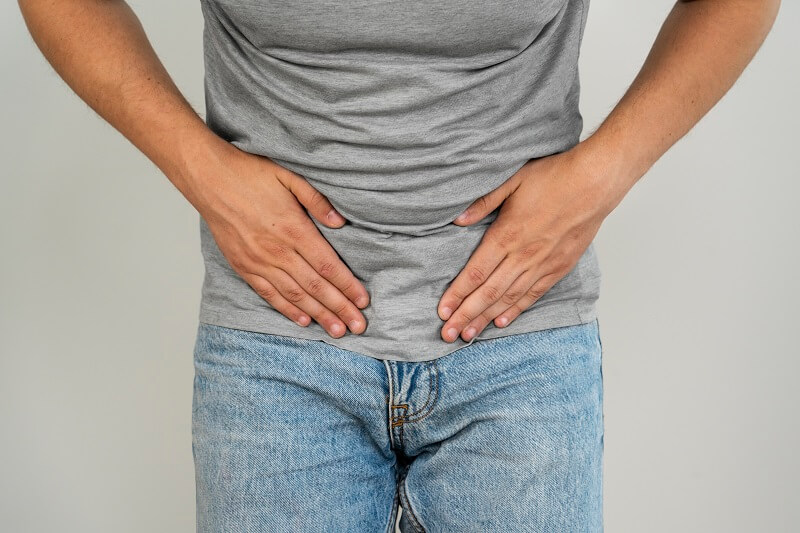The triangular, muscular, and hollow organ that holds urine is your urinary bladder. Located in the lower abdomen, it contracts to eliminate urine via the urethra. The brain receives a signal when it's time to empty the bladder when it fills to capacity. An overactive bladder is a medical term to describe a condition when you have frequent urges to urinate throughout the day. The bladder may or may not be full in this case.
An overactive bladder may affect your daily routine and disturb it tremendously. Many people are too embarrassed to bring this topic of conversation up with their doctors even. The best urologist in Islamabad discussed the causes, symptoms, and treatment options that can be adopted for this in detail. Let us share them with you.
An Overview To How This Occurs
The urine is stored in the bladder. When it is full, nerves around the bladder signal the muscles to push the urine out. Nerve endings at the urethra signal it to open to let the urine flow out of the body. Sometimes, these nerve signals get mixed up, signaling the bladder to empty even if it is not full yet. This is the mere definition of an Overactive Bladder (OAB).
This mixing of nerve signals can be due to an injury to the nerves involved, pelvic surgery, stones in the bladder, or kidney disease, or it may occur as a side effect of some other medications that you are taking. Multiple sclerosis, Parkinson’s disease, and stroke are some other neurological problems that mess with the body’s nervous system and may cause this condition.
The detrusor muscles are a collection of smooth muscles in the wall of the bladder. These may weaken over time due to pregnancy along with the pelvic muscles. Another cause of this may be an infection. A urinary tract infection can irritate the nerves of the bladder and cause incontinence. Being overweight or obese may also add pressure on the bladder muscles, causing you to feel the need to urinate often.
Diagnosis
A thorough physical examination is conducted. Apart from the family history being taken, medical history is also jotted down. Your dietary routine is also taken into account. A healthcare provider may carry out a urinalysis. This may show any abnormalities as well as identify if you have an infection that may cause OAB.
Your bladder may be observed in detail via an ultrasound or CT scan. These are non-invasive techniques as opposed to a cystoscopy which involves looking at your bladder from your urethra and is generally performed under anesthesia.
How Do You Reduce The Risk Of Developing OAB?
Lifestyle adjustments are the way to go if you mean to reduce the risk of having an overactive bladder. The most important thing is to maintain an ideal weight by eating a healthy diet rich in nutrients and avoiding unhealthy fats. This combined with some exercise will keep you healthy and fit. Kegel exercises will keep your pelvic floor muscles strong and toned. If you have any other disease, such as diabetes or hypertension, it is better to keep it under control to avoid complications.
Treatments You Can Go For
If lifestyle changes and behavioral treatments do not relieve you of your OAB, seek professional help. Medications such as anticholinergics are usually the most prescribed. Beta-3 agonists are prescribed often as well. These medicines stop your bladder from contracting when it is not full. These also increase the amount of urine your bladder can hold as they relax the bladder walls. Some people are also given transdermal patches if oral treatment isn’t feasible.
Bladder Botox Treatment may be suggested in case medications do not work. Tiny amounts of botulinum toxin are injected into the bladder muscle. This toxin relaxes the muscular wall and reduces urinary urgency as well as urinary incontinence. This procedure is performed under anesthesia. This is not a permanent solution as the condition will be reversed in six months or so. You will need repeat treatments.
Another viable treatment option is nerve stimulation. This is also referred to as neuromodulation therapy. As described above, in an overactive bladder, the nerves between the brain and bladder have incorrect communication. This communication gap is corrected by these electrical pulses to help the bladder function properly. Sacral neuromodulation is another type of nerve stimulation to stop OAB symptoms.
Final Thoughts
An overactive bladder can be very stressful. Treatment is challenging as well. Lifestyle changes can help improve the symptoms and ease that stress. If treatments do not work for you, there are many incontinence-managing products available in the market to help you feel confident and comfortable. It is important to schedule an appointment with your healthcare provider in the first place so that proper diagnosis and treatment options can be discussed.





Comments